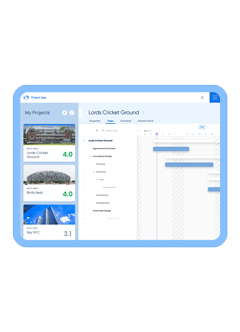As an industry, we are in uncharted territory. When will an Uber-type company change the AEC industry as we know it, and how can we plan to be a part of it?
We read how Mega-trends are redefining the world–in all cases, digital technologies top the list. Financial technology (“FinTech”) companies, more flexible than their big bank counterparts, are forcing changes. The amount of information collected and interpreted is growing. No CEO wants to look back and reflect failing to prepare for this fourth ‘industrial’ revolution.
I agree the convergence of various types of digital technologies happening all at once is a key trend. I am, however, of the opinion that we will not witness an Uber-type scenario in the AEC sector. Digital technology will serve as an enabler and not a disruptor to the industry. It will enable new business models to innovate, redefine experiences, and fortify sustainable businesses.
The visible impact of digital is how people can now work in a more collaborative way. Social, mobile, cloud, and BIM allow for architects, engineers, surveyors, contractors, and others involved in a project to work from one set of drawings. Moreover, while it is easy to become an Uber driver, the AEC sector necessitates skilled and credentialed professionals to drive creativity, intuition, and judgment. They have the experience to know what questions to ask. Hence, I can envision a new type of AEC firm arising as a result of digital – the digital consultancy.
What is a digital consultancy and how can today’s firms begin the digital transformation?
The digital consultancy represents more than the use of technology to improve operational efficiencies. Rather, it is about creating the environment for employees to gain the knowledge and skills to innovate and build the capabilities to deliver the specific customer value which leads to better shareholder value. It is about data, people, and knowledge. The distinction is placing employees and customers at the center of everything it does as it moves into the digital economy.
Consider the following concepts as a strategy map to begin your digital transformation:
- Communicate the mission – Elevate technology to a chair in the boardroom. The responsibility falls on the CEO. In many ways, the CEO is the Chief Digital Officer.
- Disrupt yourself – Don’t look to disrupt your entire business at once. Keep your primary revenue source intact, but look at the edges of your business to innovate new services and new customers. Use real time information to measure your disruption and get the necessary feedback.
- Enhance your talent – Hire, train, or create the necessary roles to build the capabilities to deliver customer value. “Data Scientists” or “Digital Engineers” could be new roles to augment new services such as data mining or analytics to smart city schemes.
- Find new partners – Look to partner with technology companies. Why wait for these digital natives to come in on their terms? Create partnerships to learn from them. Create an ecosystem of partners that can innovate, invest, and offer better customer experience.
The consultancy that figures out that the opportunity is for digital to transform the work itself will become the disruptor.
There is no opting out of digital transformation– have you started discussing your digital scenario?









